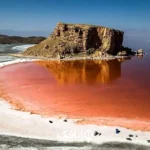Urmia

- Country: Iran
- City: Urmia

Mayor: Hossein Mehdizadeh
Urmia is one of the metropolises of Iran, the capital of West Azarbaijan province and Urmia city in the northwest of Iran, which is located in the Azarbaijan region. This city has a population of about 930 thousand people, it is the 10th most populous city in Iran and the second most populous city in the northwestern region of Iran. Urmia is located at an altitude of 1332 meters in the west of Lake Urmia, at the foot of Mount Sir, and in the middle of the Urmia plain. The weather in Urmia is relatively hot in summer and cold in winter.
Urmia is located 20 km from Lake Urmia with its privileged geographical position. The height of Urmia is 1,332 meters above sea level. Urmia is located in the plain of Urmia, which is surrounded by mountains such as Sirdaghi Mountain, Qizqala Mountain, Jodhler Mountain, Chihl Mar Shahidan Mountain, Mah Daghi Mountain, Ali Panje Si Mountain and Ali Iman Mountain. Urmia is located between Lake Urmia and the wall of mountains in the west of the province. The city of Urmia is located on an orbit of 37 degrees and 32 minutes in the northern hemisphere from the equator. Also, this city is located on the meridian 45 degrees and 2 minutes east of the Greenwich meridian.
The climate of Urmia is hot in summer and cold in winter with an average temperature of 9.8 degrees Celsius. The rainy season starts at the end of October and the beginning of November and continues until June. The average rainfall period of 93 days in Urmia is 360 mm and the long-term average rainfall in Urmia is 2.238 mm. The days of frost in Urmia are 19 days in November, 27 days in December, 30 days in January, 28 days in February, 14 days in March, and 6 days in April. In total, 120 days of the year are frozen in Urmia. The average wind speed in Urmia is 10.5 meters per second; April and March have a maximum wind speed of 16 meters per second, and Day and Bahman have a minimum wind speed of 7 meters per second.
This city has many historical, ancient, natural recreational, and welfare monuments and can be considered a very good destination for tourists in all seasons. Among the historical monuments are the Three Domes, Jame Mosque, Sardar Mosque, Minareh Mosque, Nene Maryam Church, Doqquzpilleh Glacier, Covered Bazaar, and among the natural monuments are Urmia and Marmisho Lakes and Golmaroz Lagoon, among other ancient monuments. It is possible to mention historical hills and ancient castles, including Urartian, works in Baranduzchai and Anzal, and various villages of Urmia city, the most important of which is the ancient Goi Tepe hill two kilometers from the city and the famous Kazem Dashi castle on the shore of Lake Urmia.
Urmia is a sister city to Erzurum (the largest and most populous city in eastern Turkey) and the consulate of the Republic of Turkey has been located in this city for a long time. This city has historical, natural, and anthropological museums where culture, history, wildlife, geography the past, and the customs of the people of this country are displayed.
Urmia is a city with a very high agricultural potential and is considered one of the country’s agricultural and animal husbandry poles, and the main products produced in it include apples and grapes.
The souvenirs of this city include bedameshk, halvah walnut halva, badamashbi, and bedameshk, as well as the works of woodcarving artists.
Also, Azerbaijan’s Ashiq art with the title “Ashiqlar” is registered in the list of spiritual heritage of the country under the name of Urmia.
Shahrchai River from inside the city and Baranduzchai and Nazlochai rivers also flow from both sides of the city and between the villages towards Lake Urmia, adding to the beauty of Urmia, the beautiful lake of Shahrchai Dam is considered a great capacity for tourists to visit.